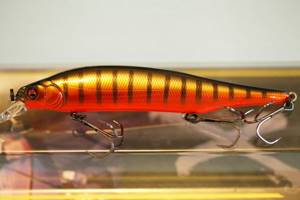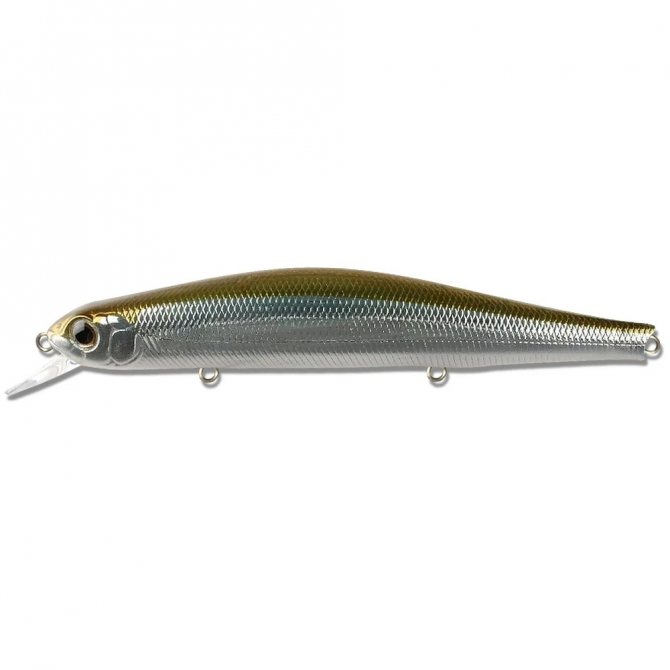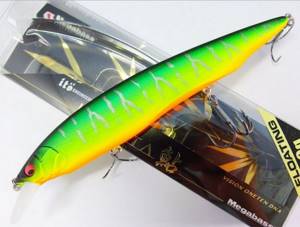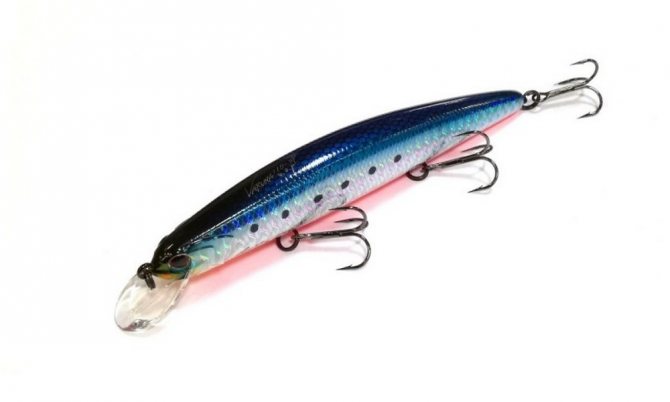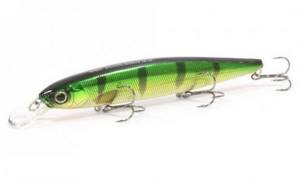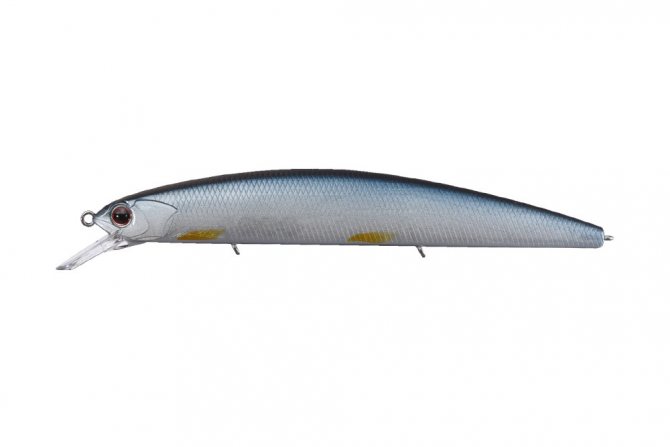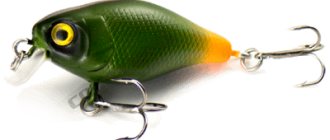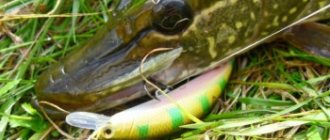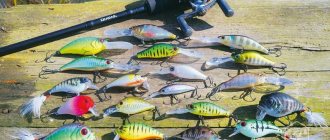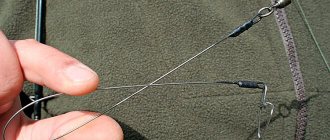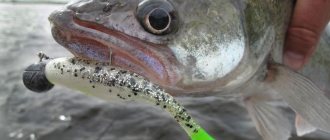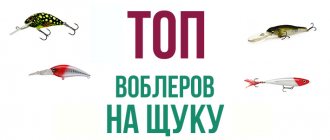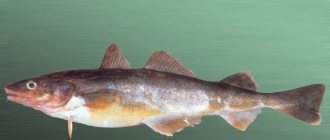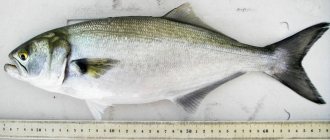Fishing is one of the most common hobbies of middle-aged and older people. They find this activity calming and gives them the opportunity to enjoy not only nature, but also the process of fishing. For them, this activity is like some kind of irresistible desire, which is why they go fishing at any time of the year and under any conditions, even the most dangerous.
One of the desired prey for fishermen is pike - a folk hero of fairy tales and an ideal component for fish soup according to an old recipe. And for successful fishing, among all the equipment you need to have such a thing as a wobbler.
In this article, experts from Obzor-Expert.com identify the best wobblers for pike and pay attention to the rules for their selection.
The best wobblers for pike
Rating of the best wobblers for pike
| Photo | Name | Rating | Price | |
| #1 | Jackall Rerange 130 SP | ⭐ 100 / 100 4 - votes | Find out the price | |
| #2 |
| Megabass Ito-Shiner | ⭐ 99 / 100 2 - votes | Find out the price |
| #3 |
| Fishycat Junglecat 140SP | ⭐ 99 / 100 1 - voice | Find out the price |
| #4 |
| Jackall Tiny Magallon MR | ⭐ 98 / 100 | Find out the price |
| #5 |
| Zip Baits Orbit 110 | ⭐ 97 / 100 2 - votes | Find out the price |
| #6 |
| Megabass Kanata | ⭐ 96 / 100 3 - votes | Find out the price |
| #7 |
| Jackall Mag Squad 128 | ⭐ 95 / 100 4 - votes | Find out the price |
| #8 |
| OSP Asura Varuna 110 | ⭐ 95 / 100 2 - votes | Find out the price |
| #9 |
| Megabass Vision Oneten | ⭐ 94 / 100 3 - votes | Find out the price |
| #10 |
| Deps Balisong Minnow 130SP | ⭐ 93 / 100 1 - voice | Find out the price |
| #11 |
| OSP Rudra 130 SP | ⭐ 91 / 100 2 - votes | Find out the price |
Which wobbler for pike would you choose or recommend purchasing?
Take the survey
The best universal wobblers
ZipBaits Orbit 110 SP
Rating: 4.9
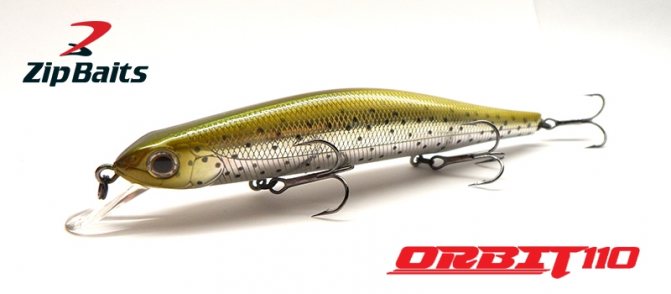
The extremely expensive and catchy wobbler from the ZipBaits company was developed with an emphasis on professional fishermen, and clearly did not want to go out to the general public. The 11-centimeter suspender is made in almost the same style as the previously reviewed VARUNA 110 SP, but due to subtle differences it has become more preferred by the inhabitants of domestic reservoirs. In particular, the greatest interest in it is shown by pike and asp, which live very close to its nominal working horizon (0.8-1.5 meters). Pike-perch also does not hesitate to emerge from the depths, being impressed by the size of the potential prey and the passively relaxed game, which reveals a fry that is not at all prepared “for a stressful life.”
Consumer reviews have long been prophesying for the ZipBaits Orbit 110 SP wobbler the glory of one of the most successful universal wobblers that came to the Russian market from Japan. Despite its high cost, it has become a basic element in the collection of many experienced fishing enthusiasts, and is no less often found on the spinning rods of novice anglers.
Advantages
- widespread among the entire fishing audience (beginners, amateurs and professionals);
- excellent catchability with any fishing technique;
- huge variability of coloring;
- seductive and distinct play, provoking the predator to quickly attack;
- very high quality exterior finish;
- the presence of a long-distance casting system (with a weight of 16.5 grams);
Flaws
- extremely high price.
OSP VARUNA 110 SP
Rating: 4.8
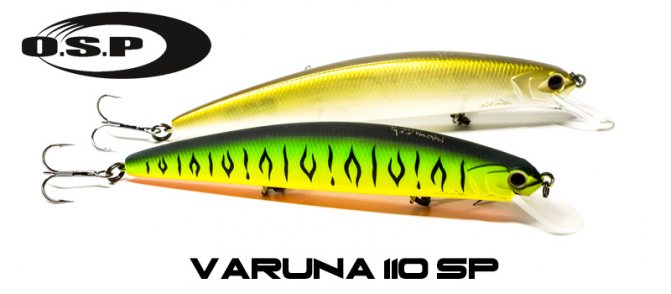
Another representative of the Japanese side of developers, officially released in 2015, was included in the rating. The VARUNA 110 SP suspender takes an intermediate place in the line between RUDRA (13 centimeters long) and ASURA (9.3 centimeters), and combines the characteristic features of both catchable wobblers. When casting, the model dives to a depth of up to 2 meters, which is the nominal working position (with uniform and stop&go retrieves). For greater depth (up to about 3 meters), anglers only need to use the twitching technique, to which the small minnow also responds very correctly.
Despite the fact that the own weight of the OSP VARUNA 110 SP wobbler (16 grams) is quite suitable for casting at a decent distance, it has a floating balancer system. Three tungsten balls moving along the guide add inertia to the wobbler during flight. As in the case of its main competitors, the only weak point of this bait was the high price, which cuts off thrifty and novice anglers from the target audience.
Advantages
- high-quality execution of the balancing mechanism and external part;
- an exciting game that can “stir up” sedentary fish;
- optimal depth for catching all popular river predators;
- high-quality, tenacious fittings;
- the presence of a noise chamber built into the body of the fish;
Flaws
- high price.
Universal table for choosing places, fishing methods and bait
| Fish | What gear is best to take? | Where is the best place to fish? | What is the best bait to use? |
| Perch | spinning | pond, river | spinner, twister, worm |
| Asp | spinning | reservoir | castmaster |
| Pike | spinning | pond | wobbler |
| Burbot | Donka | deep hole in the river | crawl out |
| Zander | spinning | deep hole in the river | jig |
| Carp | fishing rod with float | pond | sweet corn, boilie |
| Som | Donka | deep hole in the river | crawl out |
| Trout | fly fishing | fast river | front sight |
| crucian carp | fishing rod with float | pond, lake | Dough, maggot |
| Grayling | fly fishing | fast river | front sight |
| Carp | feeder | reservoirs | boyle |
| Roach | feeder | river, pond | maggot, moth |
| Silver carp | feeder | pond | technoplankton |
| Tench | fishing rod with float | ponds | dung worm |
| Bream | feeder | reservoirs and rivers | maggots in a bunch |
| Bleak | fishing rod with float | pond | maggot |
| White amur | feeder | pond | maggot, technoplankton |
| Ide | feeder | river, reservoir | maggot, worm |
| Rudd | fishing rod with float | pond | maggot |
| Chub | spinning | shallow river | small wobbler |
| Chekhon | elastic band, feeder | river, reservoir | maggot |
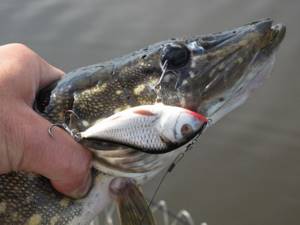
Pike requires a certain approach, since it is considered quite “capricious”
Types of wobblers
Today, there are three main categories of wobblers, which differ in certain characteristics.
- Sinking. The designation is the Latin letter S. This type of wobbler, after casting, quickly sinks to the bottom of the reservoir. The wiring is carried out with short pauses near the bottom. Fish will not bite on such bait in the summer, but in the fall, when the water is cold, yes.
- Floating. Designation – Latin letter F. This type of bait can be extremely dexterous when fishing in shallow water where grass pike lives.
- Suspender. Designation – Latin letter SP . The most commonly used type of bait with neutral buoyancy. Suspenders are used to catch fish in the water column, but it is better to do this in a shallow reservoir.
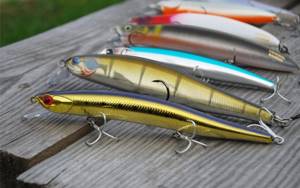
Different situations require the use of a specific type of wobbler
Wobbler fishing technique
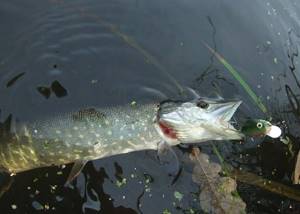
Depending on the depth at which the pike is located, a bait model is selected, which should remain at the surface of the reservoir or sink to the bottom immediately after casting.
Retrieving in the upper layer of water is carried out evenly with short pauses and twitching of the rod tip.
If the predator is located at a considerable depth, then elongated sinking models are used to hunt it.
In this case, wiring is carried out in steps with significant pauses. When retrieving, you need to try to imitate a sick or stunned fish; such prey is always a priority for pike.
When catching a predator from a boat, it is possible to get as close as possible to the hole where the predator is located, but you should not stand above the place where the predator is hiding. You should position yourself at some distance from this place and cast the bait so that the wobbler ends up behind the hole in which the predator is located. Then, using even wiring, you need to wind the line so that the bait passes through the area where the pike is located.
Only fish of sinking models are suitable for such wiring, which immediately sink to the bottom after casting the bait.
A few words about the degree of depth
Wobblers vary in depth. The designation of each group indicates at what depth the wobbler will be when reeling in the fishing line.
There are five types of wobblers.
| Group name in Russian | Group name in English | Description |
| Superficial | top waters | Wobblers of this type, when thrown from gear, do not end up at depth, they are on the surface of the water. In certain situations, such wobblers show themselves quite effectively. This group includes crawlers, poppers and walkers. |
| Subsurface | super shallow runners | Throwing a wobbler of this type, you can see how it dives to a shallow depth - up to 15 cm. A subsurface type wobbler shows itself to be extremely effective when the pike is hiding among the algae. |
| Shallow water | shallow runners | It is considered the most versatile bait that can be purchased for pike hunting. As a rule, when you throw such a wobbler, it sinks to a depth of no more than 1 meter. |
| deep sea | deep runners | Another name for such a wobbler is deep. This type of wobbler can dive to a depth of two meters. They are usually taken where there are deep bodies of water. |
| Super deep sea | DDR | Subcategory of deep-sea wobblers. Their representatives are distinguished by their diving depth - at least they can dive to a depth of 2.5 meters, as well as by their appearance - they have a long shoulder blade in front. In general, super deep diving crankbaits are rarely used by pike anglers. |
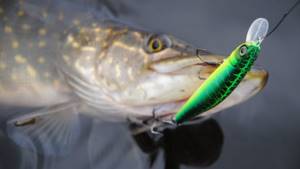
The degree of penetration is a rather important parameter
Important! Choosing the right bait for pike requires taking into account the degree of depth.
Taking into account the above information, the angler will provide himself with several things at once: trouble-free fishing and a good catch.
You might be wondering which tent to buy.
Wobbler selection
In order to reduce the number of wobblers that can be offered to pike “for lunch,” you should know its basic gastronomic preferences:
Size
If the fisherman does not strive to catch the pike of his dreams, then using small wobblers 5–8 cm long can quantitatively catch much more predatory fish.
If you go pike fishing for a trophy specimen, then the length of the wobbler must correspond to the expected catch.
When using an artificial fish 15 cm or more in length, the number of bites noticeably decreases, but only large pike are interested in such artificial bait.
The advantage of using large wobblers is that the bites of perch and pike-perch are completely eliminated, which, when specifically hunting for pike, are quite often a “by-product” of such fishing.
Small baits work especially well in shallow water overgrown with aquatic vegetation. In such places, the grass pike is located in the “green” and pounces on the fish swimming by. A wobbler that is passed past an ambushed pike is rarely ignored by this fish.
Small wobblers for pike are in great demand by other predators, so the use of small wobblers can be more profitable in terms of quantity.
Color
Artificial fish of silver and gold colors are the most catchy , but during the feeding period, which usually occurs for this predator in March, the color of the bait does not matter much, because at this time the predator rushes at everything that moves.
Form
To catch pike, you can use artificial baits of any shape ; pike are often interested in baits in the shape of frogs and small rodents. A universal bait for catching toothfish is a bait in the shape of an elongated fish.
Depending on the season and time of day
- After the spring zhora , the pike begins a significant period of inactivity. At this time, the fisherman should especially carefully select bait in order to interest this fish. Often, you have to move along the shore or across a body of water by boat in search of a predator hidden in the algae.
- The peculiarity of catching a toothy predator in the summer is that pike does not like too warm water and at this time of year goes a considerable distance from the shore. Pike are found mainly in deep holes filled with snags. For effective fishing in such places, wobblers of a sinking design are used. To reduce the likelihood of snagging, it is necessary to remove all hooks from the bait, except for the one located in the tail part.
- The morning hours are considered the most effective for catching pike in summer. At this time, the fish can come out of its shelter in shallow water and purposefully hunt for frogs; it is at this moment that the frog wobbler, which is carried out in a stepwise manner along the shore, will be the most catchy.
- Autumn time for pike fishermen can be so productive that many toothfish hunters only fish for pike with a wobbler at this time of year. Pike begin to feed heavily in the fall before the hungry winter period. In September, this predator can be found on the edges and in shallow waters, where this fish enters after schools of fry that have grown over the summer.
As the water temperature drops, the pike moves further and further from the shore and hunts at a depth of 2–4 meters. This is due to the fact that the food supply that the pike feeds on at this time sinks into the lower layers of the reservoir.
Color
Any fish, even the most aggressive one, will be careful, because it wants to live quietly, and not survive. But she has to do the latter. The reason is the desire of the animal or person to catch it.
When fishing, a person has to resort not so much to physical abilities as to cunning. Yes, before a person could simply wait by a pond with clear water and catch fish with a sharp stick. Today he has to resort to tricks. And here fishing tackle and its main part – bait – come to the rescue.
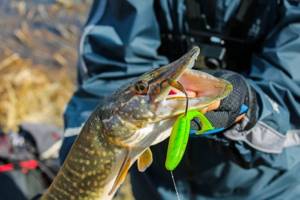
Today people can fish with greater comfort
In this case, a thing called a wobbler is used to catch active fish. And when lowering such a bait, you need to think about what color it is. Pike is not a stupid fish - it will not fall for a bright, almost acid-colored bait. Maybe in the fall, when it’s hungry.
Therefore, if you want to accurately catch a pike, then you need to give preference to a more natural color of the wobbler, which the fish will definitely pay attention to.
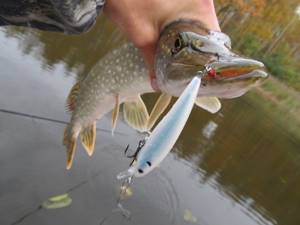
The natural color of the wobbler is the right choice for any angler
Sinking wobbler – which one to choose, where to use it
A good fishing stand has a magical effect... Thousands of multi-colored boxes are mesmerizing, so if you don’t know exactly what you need, you can think for a long time which wobbler is better, for example, green, or a longer speckled one...
Choosing a wobbler...
To choose a wobbler, you need to clearly understand what qualities it should have, what exactly is needed today. If the fisherman understands what is missing in his arsenal, then the purchase is made quickly.
We usually visit a store that sells spinning baits for three reasons:
- to replace what is lost;
- see what new items are on sale;
- purchase a specific model that is obviously missing, and if it is not on sale, then one that is close to it in terms of characteristics.
Let's consider, for example, is it worth purchasing a sinking wobbler? How exactly will it help with fishing?
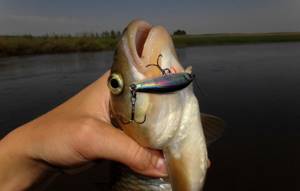
Varieties of sinking wobblers
There are a lot of sinking wobblers on the shelves. In families of wobblers, sinking variants are common. There are also separate models made only by sinking, and at different speeds. For example, these are the GagaGoom series of sinking wobblers produced by Pontoon21, or the Sukari family made by IMA. The designations are as follows: -
- SS - slow sinking - slowly sinking;
- MS - moderate sinking - sinking at an average speed;
- FS - fast sinking - quickly sinking.
For long casting
In what conditions are sinking wobblers sure to come in handy? Where will they help, because floaters and suspenders will not be able to help?
One of the classic situations for using sinking wobblers is fishing at an extremely long distance. The fish often stands at a certain border and not a meter closer to the shore, you just need to reach it, and then the bites follow one after another. An example is catching an asp, which always strikes away from the angler. A flying spinner does not help here, the asp ignores it, you need a bullet wobbler that would fly perfectly at the maximum distance.
Sinking ones are heavier, so they always fly better. In addition, manufacturers supply wobblers with an internal long-casting system.

Application of heavy options
It is desirable for every angler to have a heavy sinking wobbler for long-distance casting in his arsenal, and selecting one will not be a problem in a good store, because now you know what you need.
For example, the Dexter Minnow 71S-SR from Pontoon21 flies well, sinks very attractively, and yaws steadily, but you can, of course, choose other models.
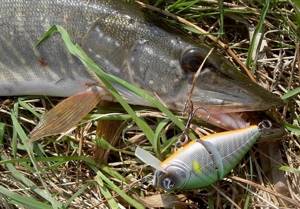
Another example where sinking wobblers will definitely come in handy is fishing on a fast river. Many heavy models are designed specifically for very fast currents. But any weighty wobbler in a good current will be more stable than any other species of the family. There is nothing to do in the current without sinking wobblers. The heaviness makes it possible to keep the wiring horizon. A floating wobbler will be squeezed out and lose its action. There are also special wobblers for fast rivers, often for trout fishing.
A stream with a decent speed is not uncommon, so a sinking medium-sized wobbler for a fast current is necessary in a fisherman’s box.
Slow for pike
When fishing, you often need to vary the fishing depth. This fishing technique allows you to achieve results when the situation seems hopeless. Wobblers with a certain wiring horizon will not help here; lowering them below a given level is not realistic. Spoons, which, being sinking in themselves, are easily carried across different horizons, may not attract fish.
For pike, it is precisely a slow and sinking attractive object that is needed, that is, a special version of a wobbler.
It is necessary to choose one for slow wiring, which can be used to catch local pike anchorages near the bottom, while changing the fishing horizon.
That is, not every sinking wobbler is capable of this. But you can choose a model with such qualities. For example, heavy wobblers without a blade and joints are suitable. Models produced by Pontoon21 called BullyBoo or, say, Danzante meet these requirements. These models are convenient for checking every promising pike or zander point. Their own game when moving slowly is attractive enough to rip the predator from its place, but the angler is required to have a “smooth move” and constant control of the bait without jerking.
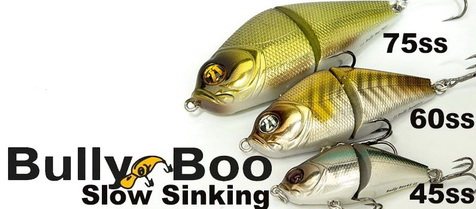
After purchase
After purchasing a new wobbler, you need to watch it play in clear water in shallow water. It is not possible to give exact recommendations on how to guide a sinking wobbler. For each model you need to choose your own style, your own manner, which will also be individual for each fishing enthusiast. After all, even a slight twitching of the tip gives the wobbler a different movement, which can be the reason for success or failure.
Correct actions with sinking heavy wobblers for slow retrieval are especially important. Therefore, if there is no result right away, you should not give up and throw away the model, it is better to try to change the style and understand the capabilities of this wobbler.
Size
As a rule, size is important in many things. And in fishing too. Do you want to catch a “trophy”? Then take a wobbler whose length is more than ten centimeters. They are more noticeable in the water, they make a more obvious vibration, which is why any pike can see it. True, such parameters are not suitable for smaller prey.
You can, if you wish, buy medium and small wobblers, because they are considered universal in use. And they can be used to fish in shallow rivers.
Important! The size must be selected for specific conditions. This means that before fishing you need to study all the conditions.
And lastly, some people care about quality, others about quantity. For those thinking about the former, here's what you need to know: You need to be mindful of the size of the hook on your bait. If it is small, then nothing will come of cutting, and if it is large, then the balance will be upset.
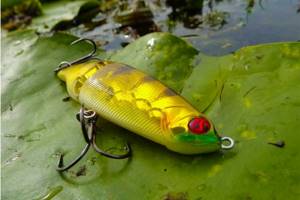
You need to look for the optimal size of bait and hooks on it
The connection between a wobbler for pike and the time of year
Each time of year is pleasing in its own way. Moreover, from the point of view of fishing, they all have certain conditions for catching pike. And therefore, everyone who wants to try their luck in hunting pike must take into account the characteristics of the time of year when this fish is active - spring, summer and autumn.
Let's look at these features below.
Spring
It’s the beginning of spring, the ice is melting, and the pike has a pre-spawning feast after a cold winter, which took all the fish’s strength. Knowing this, an angler can go fishing for pike and have a high probability of catching a fish.
After a while, when the water temperature reaches at least seven degrees Celsius, the fish begin to spawn. Therefore, you need to know that it is better not to catch fish during spawning - you will waste time, and the pike will not budge.
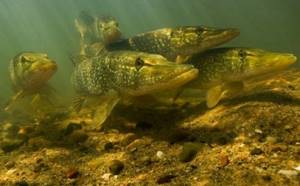
Spawning is a time when you definitely shouldn’t catch pike: you should catch it either before or after
In the next two or three weeks after the end of spawning, the pike becomes active again and can be caught.
Important! There is a sign - when the rose hips bloom, then the zhor comes after spawning.
At the end of the feeding period, the pike remains just as active, although it falls over time.
In general, three points can be identified related to the behavior of pike in the spring.
- Slowness. In spring, pike are a little “slow.” She had just come to her senses after a long winter in cold water. At this time, it is better to take wobblers that are not too large (8-9 cm) and look quite natural.
- Migrations in the spring . And this happens both before and after spawning. In this case, you need to look for pike in other places, among which there may be holes, deep drops, and also spits.
- In the spring, pike stay in shallow water, where the water warms up faster than in a large body of water. Knowing that the pike has just woken up, it needs a warm place, and shallow water is most suitable for this. The depth of the area is up to two meters, and shallow and deep wobblers are most suitable for this. But the surface and subsurface options work much worse.
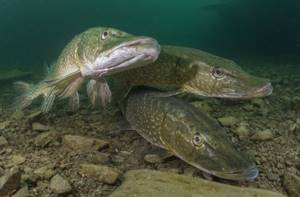
You need to know about the behavior of pike in the spring if you plan to “hunt” it.
Summer
After spring comes summer, when the water in most reservoirs heats up well. It turns out that fish like pike do not have much love for too warm water. Therefore, they go into the distance, into deep holes with snags. And there they spend the whole summer.
Now we will tell you what you need to catch pike in a hole. At a minimum, in addition to tackle and equipment, the fisherman needs to take, at a minimum, deep-sea sinking-type wobblers. They measure up to 15 cm and dive to a depth of two meters. You definitely need to take care of the color of the bait - with a bright and noticeable color, the wobbler will definitely attract its prey.
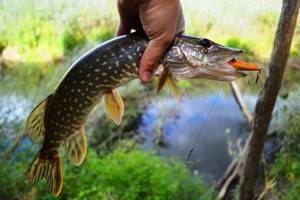
It is worth taking only large-sized wobblers
Important! By the way, about time. In summer, it is best to catch pike in the early morning or in the evening. Then you will definitely catch such a difficult fish to catch.
But not all pikes run to the holes. Some of them hide among aquatic vegetation and in this case it is better to take surface wobblers, especially poppers, with which fishing becomes much easier. You can also catch pike using a floating wobbler.
Below is a brief explanation of how to fish correctly.
- Prepare gear for fishing.
- Throw the wobbler into the desired location.
- Carry out its wiring.
- If there is an obstacle in front of the wobbler, then stop reeling and go through the obstacle. Re-throw the wobbler and continue fishing until the fish is caught.
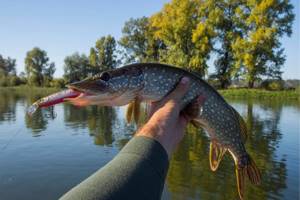
Fishing in summer is quite easy if you know how and where exactly
Autumn
But after summer comes the best time for fishing - autumn. Then the water temperature becomes lower, the vegetation disappears, and everything is better visible. And at this time the pike begins to eat heavily - winter will come soon, and it needs to survive it.
In September, when the season is just beginning, you need to take a medium-sized wobbler that has a depth, albeit a small one. With such a wobbler it will be quite easy to catch a pike that is hiding in shallow water.

Autumn is the ideal time for pike fishing
When mid-autumn arrives (October - mid-November), then the water becomes even colder, the vegetation becomes even less, and the pike hides even deeper. During this period they live at a depth of up to four meters. And in this case, large-sized super-deep-water wobblers are taken (fifteen centimeters is quite normal). With such a bait, catching pike in the autumn cold, when it hides at the bottom, becomes a complete pleasure.

It is worth knowing where to catch pike when it is very deep
Features of fishing with wobblers depending on the type of fish
Catching catfish with wobblers has the following features:
- The best technique for catching catfish is “trolling”.
- You should choose a place to catch catfish by trolling in areas upstream, not far from the holes where it often lies. The depth in such places should be about three meters.
- The bait for catfish should be launched from the place where it exits the hole. Thus, you seem to lure the fish out of their shelter.
- Fishing should be done in a zigzag motion. This will facilitate fishing of a larger area in the reservoir.
- Trolling for catfish is recommended from a boat.
- If after several attempts the catfish still does not bite the bait, then you need to change it to another and change the speed of the retrieve. If after these procedures the catfish still does not bite, then you need to change the place of catching.
- When a catfish bites, there is no need to rush, since it is a very strong fish and needs to be exhausted to make it easier to pull it out of the water.
- After the fish gets tired, you need to gradually bring it to the boat and slowly pull it towards you. In this case, you must always be on guard, otherwise the frightened fish may begin to resist with all its might.
- It is recommended to wear thick gloves when reeling in a large catfish to prevent it from grabbing your hand.
- You should always drag the catfish from its head. When most of the catfish's body is in the boat, the mono will already relax, since the tail already weighs much less.
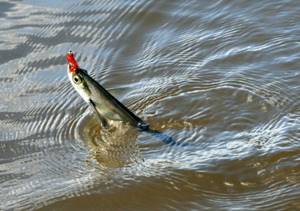
Catching asp with wobblers has the following features:
- It is best to catch this fish with wobblers on small rivers, since there are excellent conditions for using bait.
- The best wiring for asp is alloy wiring.
- The cast should be made downstream of the river or near the coastal zone.
- There is no need to close the line handle. This way the bait will move freely downstream.
- In addition, asp can be caught in areas of the reservoir near holes and rifts where this fish lives.
- The location of the asp can also be determined by its characteristic splashes.
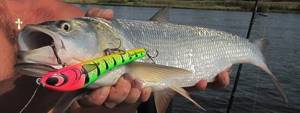
Catching pike with wobblers has the following features:
- The most effective wiring of wobblers for pike are twitching and uniform wiring.
- You should know that when twitching, you need to reel in the line in time after pulling, without allowing it to sag, since you can miss the bite of the pike, which will quickly understand the deception and spit out the tasteless wobbler.
- You should only use metal leashes on pike, which they cannot bite through.
- When fishing for pike, you should have several different colors of bait in order to use them depending on fishing conditions and weather.
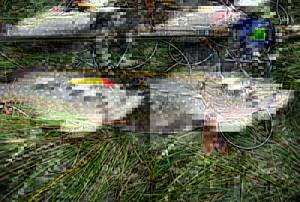
Fishing for trout with wobblers has the following features:
- The shapes of trout wobblers can be not only like those of fish, but also like those of various beetles and insects. This fish bites perfectly on such copies. In addition, wobblers in the shape of small crustaceans and crabs are very effective.
- Casting wobblers for trout should be done at an average speed at a depth of up to four meters. The best wiring is twitching.
- If trout fishing occurs in shallow water, then wobblers with a small petal should be used. It will help the bait oscillate more clearly in the water and attract trout better.
- When fishing for trout at great depths, you should use sinking wobblers with a bright action.
- Trout respond well to bright spots on wobblers, so when fishing during the day, it is advisable to have red or orange splashes on the bait.
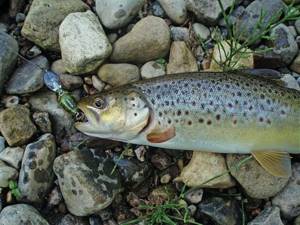
Catching perch using wobblers has the following features:
- Since perch is not a very large fish, the wobblers for catching it should be of medium size. It is best to use baits with a size of three to seven six centimeters. If the wobbler is larger, the perch will be afraid of it and will not bite it.
- For perch, it is recommended to use wobblers that look like a wounded and weak fish. This will further inflame the interest of the perch and contribute to its bite.
- Perch responds well to shiny inserts on baits, especially if the fish is caught in cloudy weather.
- It is recommended to move the wobbler to the perch quickly, with short pauses, so that the fish can think about whether to peck at such a fish or not. This will pique her interest even more. Step wiring is very effective.
- If perch is caught in winter, then the wobbler must be pulled out slowly, since the fish becomes more timid at this time.
- If the catch occurs in spring or autumn, then wobblers with medium immersion (up to two and a half meters) should be used.
Catching pike perch using wobblers has the following features:
- The best way to use wobblers for pike perch is trolling.
- If the fishing takes place in muddy water, then acid-colored baits should be used. If in clean water - then natural colors.
- Pike perch is a large fish, so the size of wobblers for it should be from eight to twelve centimeters.
- Pike perch responds well to baits that have noise or sound signals when retrieved, so it is recommended to use wobblers with such effects to catch them.
- Pike perch is a fairly strong fish, so the rod and reel for catching it should be as strong as possible.
- Pike perch bites very sharply on wobblers, so when it is detected, the fisherman hears a characteristic strong push.
- Hooks for pike perch must be very strong so that he cannot bend them when fishing.
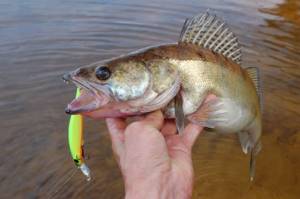
Catching chub using wobblers has the following features:
- To catch a medium-sized chub, you should use wobblers with a size of three to five centimeters. To catch large specimens of this fish, it is necessary to use bait with a size of five to seven centimeters.
- Wiring of wobblers for chub should be done by trolling.
- Wobblers in the shape of insects or oblong flattened fish are very effective for catching this fish.
- Chub often lives near changes in depth or at mid-levels of a reservoir, so you need to look for it there.
- The chub may not immediately bite, but watch the bait for some time, so you should not rush and change the fishing location if it does not bite for a long time during retrieval. It is possible that the chub will bite when the wobbler is already close to the shore.
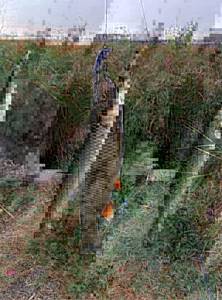
Results
Before you go to a regular store and buy a wobbler for pike, you should first study the catalogs of online stores, which have all the necessary information to choose the model you like best. This approach to business will allow you to spend almost a minimum of available time. Don't beat around the bush - just read and choose what you like, and then clarify the nuances with a consultant.
To master pike hunting, you need to buy a wobbler. The main thing is its reliability. Having purchased such a bait from a well-known manufacturer, you can safely start catching rather finicky fish.
If the time has come for fishing, and your prey turns out to be a “lover” of hide and seek, you should take one wobbler with three hooks. It is important to do the following: remove all existing hooks, and then install a single hook. This will allow you to catch fish, and not snags, which can only ruin your gear and wobbler.
In general, pike fishing is a rather difficult task, for which it is better to prepare in advance. Having found out everything you need and selected everything you need, you can start fishing. Wobblers for pike are an unusual thing, but they are the ones that will help you catch the most finicky fish.
Photos of wobblers
Read here Pike on a spinning rod - the subtleties and nuances of fishing. Important tips on choosing gear and fishing techniques (95 photos + video)
Help the project, share on social networks 

0
Voting: which wobbler is better for pike?
Which wobbler for pike would you choose or recommend purchasing?
Jackall Rerange 130 SP
16.67 % ( 4 )
Megabass Ito-Shiner
8.33 % ( 2 )
Fishycat Junglecat 140SP
4.17 % ( 1 )
Jackall Tiny Magallon MR
0.00 % ( 0 )
Zip Baits Orbit 110
8.33 % ( 2 )
Megabass Kanata
12.50 % ( 3 )
Jackall Mag Squad 128
16.67 % ( 4 )
OSP Asura Varuna 110
8.33 % ( 2 )
Megabass Vision Oneten
12.50 % ( 3 )
Deps Balisong Minnow 130SP
4.17 % ( 1 )
